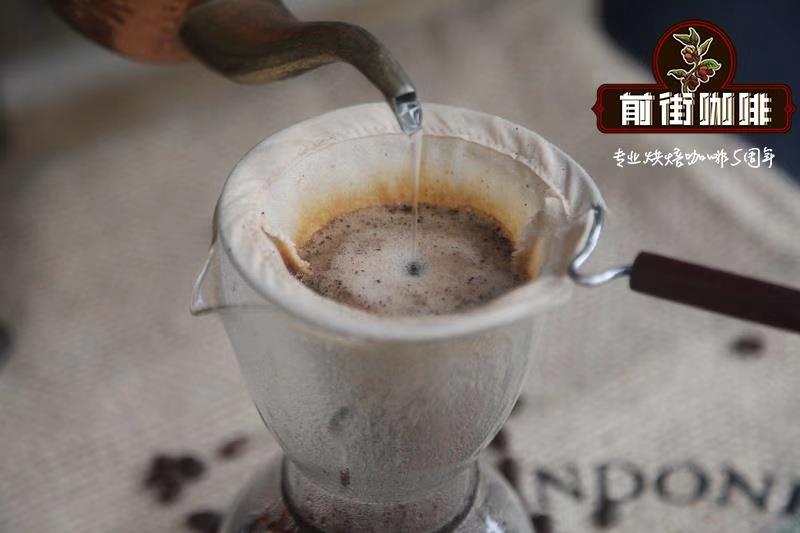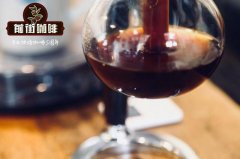What is the processing process of coffee beans?| Coffee beans peeling method is the use of machinery?

Professional coffee knowledge exchange more coffee bean information please follow the coffee workshop (Wechat official account cafe_style)
Washing Washed
Steps
In fact, under the washing method, there are many "magic versions" of it. In order to be concise and easy to understand, we only talk about the water washing method in a narrow sense.
a. Pick
b. Immersion screening
You can see that the maturity of the coffee fruit picked in the picture above is not the same. Workers pour the coffee fruit into a large pool. The immature coffee fruit floats on the water because of its low density, while the mature coffee fruit sinks to the bottom. The workers fished out the immature fruit and disposed of it, and the rest of the coffee fruit was brought to the next stage.
c. Mechanical peeling
Ripe coffee fruit is fed with the flow of water into a machine that scrapes off most of the pulp, but there is still a small layer of pectin stuck to the raw bean shell. Washed coffee follows the principle of "no mistakes", strangling any factors that may affect the flavor of coffee in the cradle. For example, at this stage, the influence of coffee pulp on coffee flavor has been almost completely eliminated, ensuring the "cleanliness" of washed coffee. The undressed coffee beans follow the current into the canal and flow to their next station.
d. Removing pectin (mechanical scraping of fermented or)
At this time, a small part of the gelatinous coffee beans on the surface, along with the already sticky water, flowed into another large pool. Pectin adhesion is strong, peeling machine can not be scraped off directly, at this time need stronger strength. Either put it in a fermentation tank and use the bacteria 'ability to decompose the gum to remove the pectin, or use a more powerful machine to brush off all the colloids on the surface of the raw coffee beans.
First, when it comes to fermentation, coffee farmers will pour the paste of coffee beans into the fermentation tank, then pour in water of the same quality as raw coffee beans, and let stand for 8 hours. The specific time depends on the temperature and humidity, cost, production area, habits and even mood and other factors. There is only one fermented film, and the most famous version of the magic modification is the "two-stage" water washing fermentation method in most parts of Kenya. Fermentation usually ends at one time, but Kenyans put the coffee in the fermentation tank for 24 hours, then take it out, rinse it with clean water, wash off some organic products from the coffee surface, put it in the fermentation tank for 24 hours, and then wash it out. "two-stage" fermentation makes caffeic acid in Kenya more hierarchical and mature.
In the process of fermentation, workers are required to stir constantly to make the coffee beans ferment evenly and make the pectin fall off fully. Although the idea of the fermentation process is still the factor that can affect the flavor of coffee, that is, pectin, it also has some good or bad side effects on coffee. Fermented coffee is moderately acidic with a special acidity and sweetness; poorly fermented coffee is either too sour or has a fermented smell of alcohol and onions. Please see Coffee Flavor Wheel for details.
The coffee in the fermentation tank is sticky and disgusting.
The sticky maze liquid in the fermentation tank must be treated as waste water because it contains the fermentation products of many bacteria and other unexplained compounds. I can't even irrigate the fields. This water is poisonous in shi.
We can see that when we talk about fermentation, there is a word "water". Indeed, for water washing, water is absolutely the most important resource, and those countries that are short of water also lack the conditions to implement it. Here we are going to talk about a relatively eclectic "washing method". That is, the method of mechanically scraping off pectin.
Mechanical scraping of pectin, at least very water-saving, do not need to soak raw beans, do not need to use water to make coffee raw beans, the speed is also very fast, but why is it not widely used? Although mechanical scraping of pectin is very fast, and it also achieves the goal of strangling pectin in the cradle that affects flavor, it lacks the stage of allowing coffee flavor to develop in the fermentation tank. Mechanically scraped coffee often has a single flavor and is not particularly delicious.
e. Drying
The water content of raw coffee beans that have been soaked in water is still very high, while the lower water content ensures that the coffee can withstand long-term transportation and storage. So people need to dry the coffee, the most widely used way is air-drying + sun-drying, wet coffee beans are laid on the cement floor, or flat on the elevated net bed, baptized by the sun and sea breeze. This step requires coffee farmers to pay special attention to turning the coffee beans to ventilate them frequently to avoid mildew somewhere because of high humidity. Raw coffee beans need to be dried to a moisture content of 10% to 12% before being stored.
f. Shelling
Sun-dried coffee beans need to be stored in a warehouse for at least 60 days, a step called "bean cultivation". In some places, it can even last for several years and become so-called "aged beans", which are loved by many Japanese bakers. Before the coffee with shell beans are shipped out, they will be sent to the sheller to grind off the endocarp, that is, the seed skin, and become the familiar light green coffee beans.
END
Important Notice :
前街咖啡 FrontStreet Coffee has moved to new addredd:
FrontStreet Coffee Address: 315,Donghua East Road,GuangZhou
Tel:020 38364473
- Prev

There are several traditional coffee bean processing methods| What are the processing methods for coffee beans?
Professional coffee knowledge exchange More coffee bean information Please pay attention to coffee workshop (Weixin Official Accounts cafe_style) Sunlight method: Sunlight method treatment will first identify the sink beans, that is, mature or semi-ripe beans spread in the bean drying field for natural drying. The exact time depends on local climatic conditions, and generally takes two weeks to four weeks. When the moisture content of coffee beans drops to 12%,
- Next

There are several special treatment methods for coffee beans | details of various special treatment methods for coffee beans
For more information on coffee beans, please follow the coffee workshop (Wechat cafe_style) [anaerobic fermentation] anaerobic fermentation is a very popular post-processing method in recent years. Coffee fruit is usually placed in an airtight container or in a washing tank to ferment in water, in which different microorganisms are used to ferment.
Related
- Beginners will see the "Coffee pull flower" guide!
- What is the difference between ice blog purified milk and ordinary milk coffee?
- Why is the Philippines the largest producer of crops in Liberia?
- For coffee extraction, should the fine powder be retained?
- How does extracted espresso fill pressed powder? How much strength does it take to press the powder?
- How to make jasmine cold extract coffee? Is the jasmine + latte good?
- Will this little toy really make the coffee taste better? How does Lily Drip affect coffee extraction?
- Will the action of slapping the filter cup also affect coffee extraction?
- What's the difference between powder-to-water ratio and powder-to-liquid ratio?
- What is the Ethiopian local species? What does it have to do with Heirloom native species?

